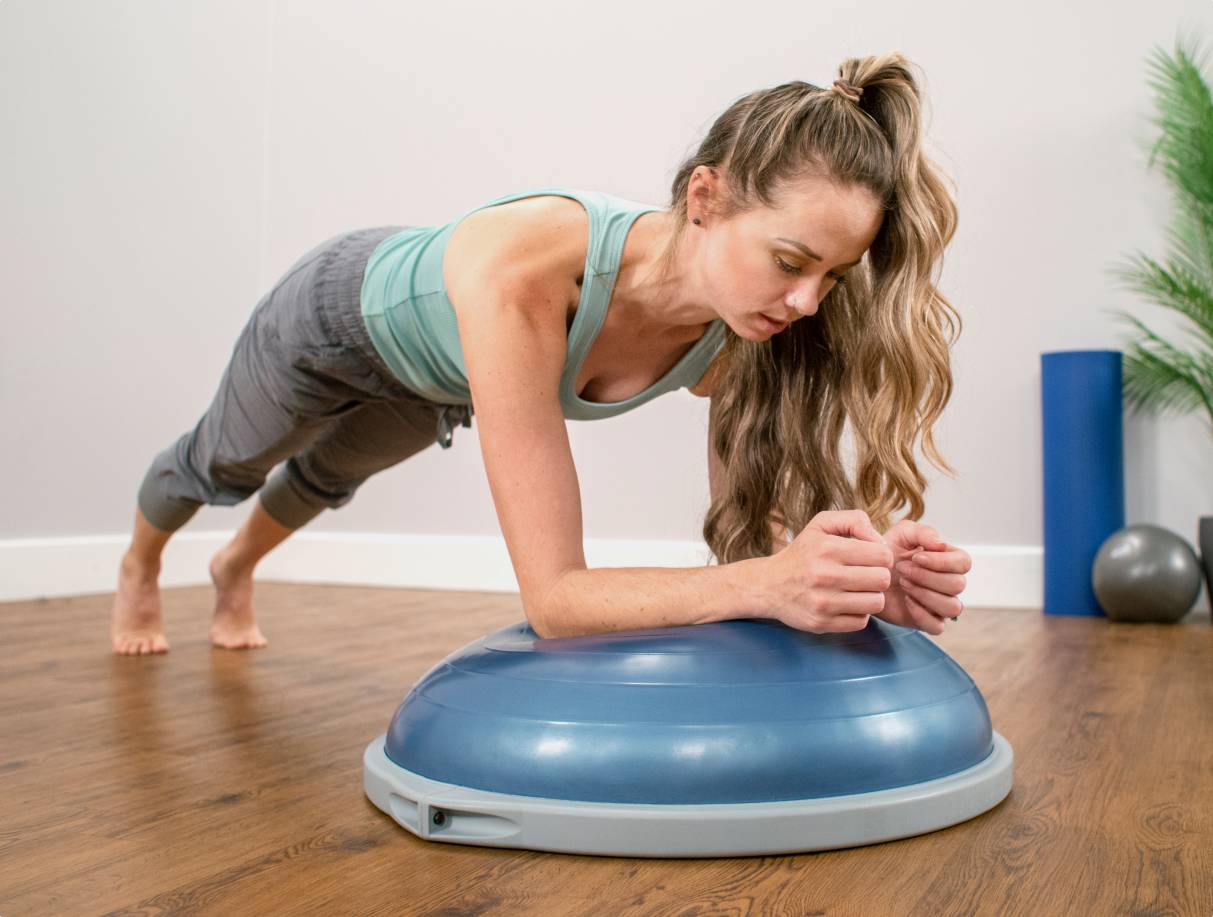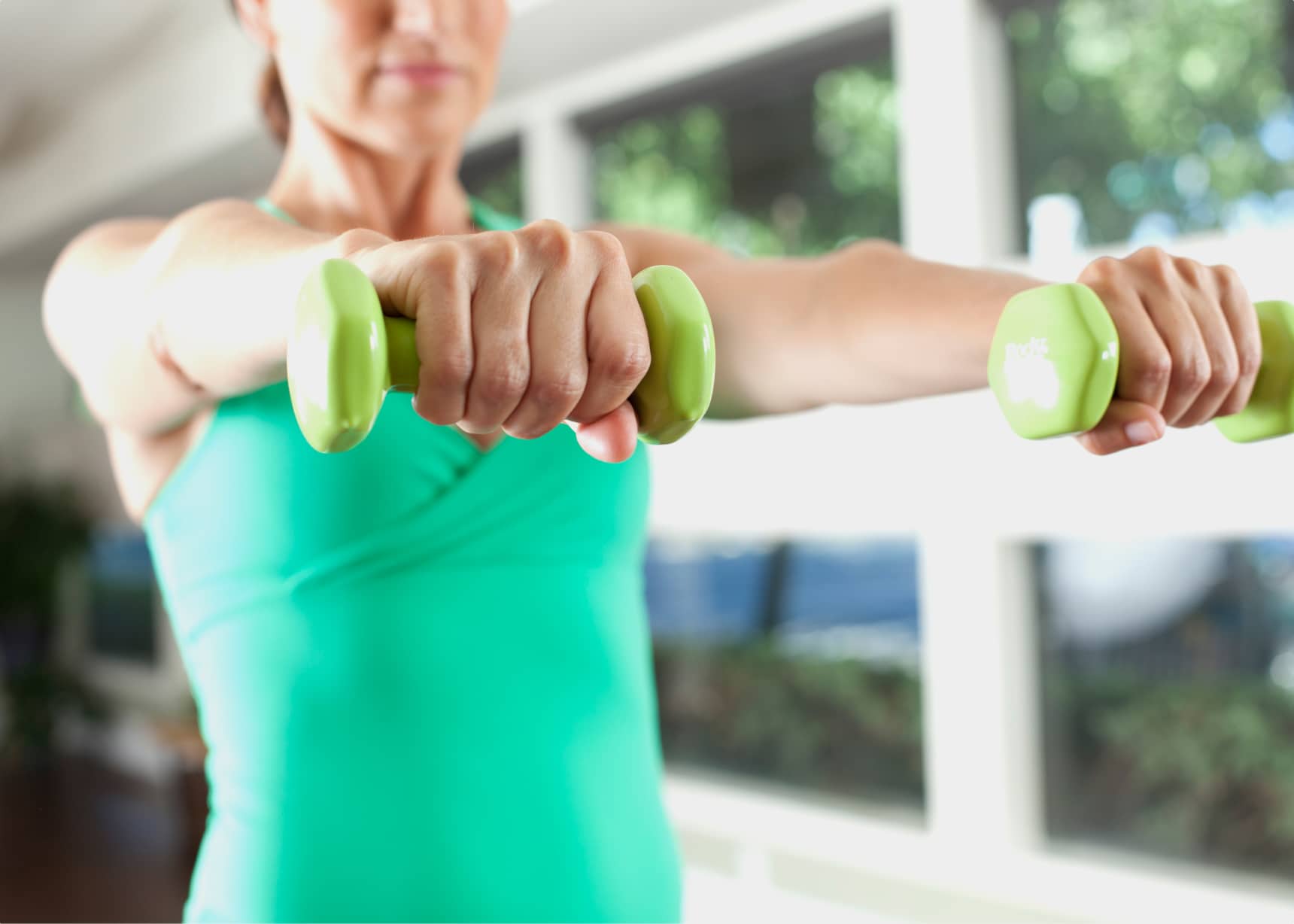Using Gym Equipment for Pilates-based Movement
Using Gym Equipment for Pilates-based Movement
By Jessica Cordero
Pilates instructors have long used balls, bands and rings to add variety and increased resistance to their programming. Here are ways to use items you might already have on hand that can immediately be added to a Pilates class. Hand weights or weighted balls, the BOSU trainer and kettlebells are tools that are making their way into Pilates studios and classes to help users break through and achieve better results and renewed interest in programming.
The BOSU
The BOSU (short for Both Sides Utilized) is a terrific tool that transitions seamlessly from the gym to the Pilates studio. The BOSU is half of a stability ball attached to a flat platform. It can be used on a mat in place of a stability ball, to perform a variety of mat exercises like the Hundred, and can also be used on the Reformer in place of, or addition to, the long or short box. Or, use it on the mat in place of a step barrel. The BOSU is unstable on one side and rigid on the other, so either surface may be used during standing exercises on the trapeze table. Because it’s unstable, it is also an excellent tool to use for balance work in standing Pilates, or as an added challenge during seated work.

Pilates-style Exercises with the BOSU
Here are some exercises to try:
- When the dome is facing up, use the BOSU as a substitute for the box. For example, the client can do an arm series while seated on the BOSU.
- Or try Chest Expansion, where the client begins by sitting on it, and progresses into kneeling.
- Try it in a short box series.
Hand Weights
Hand weights are useful and also transition easily from the gym to the studio. Use them to emphasize a different muscle group during a movement and increase the amount of challenge in a Pilates exercise or, in certain instances, make an exercise easier.
Pilates Movement with Hand Weights
In a warm-up exercise like scapular protraction and retraction, have your client hold 3-pound weights in each hand. During protraction, the weight provides a small amount of additional resistance as the user spreads her shoulder blades apart. During retraction the weight provides assistance; the “help” she receives during retraction is especially useful, as it can help her more fully retract her shoulders. This is particularly important for those who spend long hours at a computer with their shoulders rounded forward.
Hand weights can also add variety to a Pilates routine. Take the Roll Up. Holding a light weight in the hands serves two functions: during the roll up phase of the movement, the weight changes the center of gravity and moves it forward. This can make the exercise easier to complete without modifications. During the return phase of the movement, the weight provides additional resistance.

In an exercise like Spine Twist, use hand weights to give the user an additional challenge of stabilizing shoulders. With arms extended out to the side, hold 1-3 pounds in each hand. Because the arms remain extended throughout the exercise, the weight may quickly overload the deltoid muscles without performing a large number of repetitions. This can increase endurance in the shoulder muscles, without detracting from focus on the abdominal muscles used in torso rotation.
As an additional modification, supinate the palms during the Spine Twist, for more emphasis on pectoral endurance as well as shoulder girdle stability.
Kettlebells
Kettlebells resemble bowling balls with an attached handle. They may be held with one or both hands on the grip, and are available in weights from five to one hundred pounds. Because the bulk of a kettlebell’s mass is below the handle, its center of gravity moves as it is swung (pressed or pulled) – a unique feature for strength training equipment. The dynamic nature of the kettlebell means that the user must adjust movements to maintain control of the bell. Because of this feature, they add another dimension to the movement when used as hand weights.
How to Use a Kettlebell in Pilates Movement
Here is an example of a way to use a kettlebell in a roll down, adding rotation for more challenge:
- Inhale to prepare.
- exhale to flex the lumbar spine, rotate the upper torso and sweep the arm holding the kettlebell back and toward the floor.
- Inhale to hold the position and then exhale to rotate spine back to center and return arm to starting position.
- Switch the kettlebell to the other hand and repeat.
Modification: to emphasize the medial deltoid more than the pectorals, switch from a supinated grip to a pronated grip while holding the kettlebell. Combine the BOSU with hand weights or kettlebells to add several new dimensions of challenge to a workout, keeping clients constantly challenged so that their performance inside the studio and out continues to improve.
You can breathe new life into your Pilates routines by adding these inexpensive fitness accessories previously used only in the weight room.
Jessica Cordero studied exercise science at the University of Michigan. She is a trained Pilates instructor who has worked as a swim coach and personal trainer for over ten years. Her clients have appeared on NBC, Pax TV Detroit and in Self magazine. Her interests include Crossfit, Pilates and barefoot running.
As seen in the Spring 2010 Balanced Body Pilates COREterl